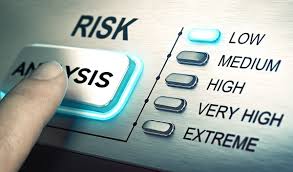Risk and its Effect on Enterprise Value
 Investors have choices in how to allocate their investment dollars across the risk and return spectrum. Whether it be bonds, public company equity, or private company equity, an astute investor will evaluate the risk of return and expect to be compensated according to this risk.
Investors have choices in how to allocate their investment dollars across the risk and return spectrum. Whether it be bonds, public company equity, or private company equity, an astute investor will evaluate the risk of return and expect to be compensated according to this risk.
Business valuation, whether for public or private companies, has three key variables: growth, profit margins, and risk.
Growth and profit margins are more easily understood by most business owners and generally receive the most attention. Growth and margins drive cash flow which is what a buyer is ultimately looking for when investing in a business. That is, what cash flow return can they expect on their investment. In the ubiquitous Gordon Growth valuation model, cash flow is the numerator; risk is in the denominator.
“The path of least resistance to increasing enterprise value is often to reduce business risk.”
Yet risk is often overlooked and under appreciated. Business risk can have many dimensions ranging from concentration of customers, reliance on a single product line, owner dependence, reliance on a key individual, sub-par financial reporting, competitive threats, and outdated technology, systems or equipment to name just a few.
Before attempting to sell a business or attract investors, an owner should consider ways to make their business more attractive to buyers/investors. Increasing growth and margins often requires the most time and capital. An owner thinking of an exit may not want to put more capital into the business. The path of least resistance to increasing enterprise value is often to reduce business risk. Examples of this include cleaning up the books, creating retention incentives for key employees, obtaining long term contracts with vendors or customers, and other measures.
Having a business appraised by an independent expert in advance of going to market helps the owner clearly understand existing risk factors that are penalizing business value. This helps the owner identify strategies and objectives to de-risk the business and enhance value for current and future shareholders.
For further information on buy-sell agreement business valuation or to discuss a potential need, confidentially, please one of our senior business appraisers.

 This article takes a look at the various situations in which trusts and estates (those that hold private business interests) need business valuation or M&A brokerage services.
This article takes a look at the various situations in which trusts and estates (those that hold private business interests) need business valuation or M&A brokerage services. In terms of business value, many business owners believe that their company is not difficult to navigate, “a direct route to the center” sort of philosophy, which is often why they tend to grossly overstate or understate real (market) value. Having started businesses on my own in the past, I can relate to the amount of courage, time, energy and sacrifice it takes to embark on such uncharted waters, and I can sympathize with (better understand) the concept of extraordinary intrinsic value (value to oneself).
In terms of business value, many business owners believe that their company is not difficult to navigate, “a direct route to the center” sort of philosophy, which is often why they tend to grossly overstate or understate real (market) value. Having started businesses on my own in the past, I can relate to the amount of courage, time, energy and sacrifice it takes to embark on such uncharted waters, and I can sympathize with (better understand) the concept of extraordinary intrinsic value (value to oneself).

